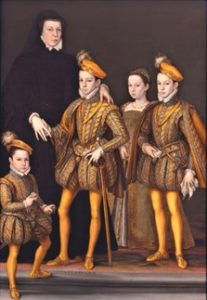Digital Accessibility of Catherine de’ Medici’s Correspondence
Beatrice Mundo, French

While analyzing volumes 2 and 10 of Catherine de’ Medici’s correspondence—covering the Grand Tour de France (1564–1566)—I discovered that these letters offer a uniquely detailed perspective on the French Wars of Religion. As Queen Mother and regent from 1561 to 1589, Catherine played a pivotal role in mediating religious conflicts. Her letters illuminate key strategies she used to navigate a fragmented political landscape marked by alliances and tensions between Catholics and Protestants. Yet, despite their value, these documents remain difficult to access and analyze comprehensively due to technical and structural limitations in their current digital formats.
This project seeks to improve the digital accessibility and analytical usability of Catherine de’ Medici’s complete correspondence, currently published in ten open-source volumes. By leveraging OCR (Optical Character Recognition) with a Python-based script, I aim to extract continuous, editable text from facsimile images—even for volumes like 1 and 3, which lack OCR on Gallica. Although some volumes offer OCR, it is often fragmented, page-by-page, and difficult to work with. Furthermore, editorial decisions have dispersed letters across different volumes, making thematic or chronological research challenging.
The long-term goal is to build an open-access digital library, modeled on https://beatricemundo.github.io/lettresmedicis6466/, that integrates OCR-processed text with TEI (Text Encoding Initiative) standards. This structure will allow scholars to explore the correspondence holistically, free from the constraints of arbitrary volume divisions. Tools such as TXM and TextObserver will support computational analysis, stylistic research, and metadata tagging, while custom Python scripts will streamline text cleaning and organization.
Unlike existing platforms, this project ensures textual continuity across multi-page letters and enables comparative studies without manual extraction. The interface will be bilingual (French/English), broadening access for students, scholars, and general audiences interested in early modern politics, women’s history, and epistolary culture.
Beyond the technical achievement, the project opens new avenues for understanding 16th-century diplomacy and gendered power dynamics. Catherine’s position—as a foreign-born queen, mother, and regent—offers insights into how women shaped and responded to religious crises through strategic communication.
Over five years, the project will progressively process and publish all ten volumes (comprising over 5,000 letters written between 1533 and 1589). The digital edition will not only support historians and literary scholars but also contribute to interdisciplinary dialogues in the digital humanities.
Building on work begun at Université Gustave Eiffel and continued at the CUNY Graduate Center, this initiative refines methodologies developed for Lettres Médicis 6466. It affirms the scholarly value of making early modern sources fully searchable, analyzable, and accessible—empowering new research into one of Europe’s most politically significant and misunderstood historical figures.